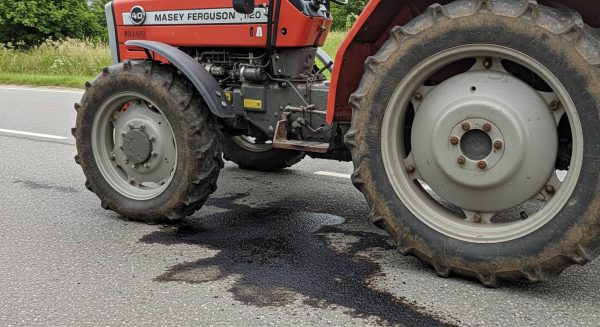Operating agricultural vehicles in the UK’s protected landscapes requires carefully balancing essential farming activities with environmental preservation. This guide explores the key considerations and regulations for farmers working in these sensitive areas.
Speed and Vehicle Restrictions
When operating in protected landscapes, agricultural vehicles must adhere to standard speed limitations as outlined by the Department for Transport. According to their guidance, most tractors are restricted to 25 mph on public roads, though some modern tractors built to higher specifications may travel at up to 40 mph if they meet specific requirements, including all-wheel suspension and enhanced braking efficiency.
Width restrictions are particularly important in protected areas where roads may be narrow or bordered by historic walls and hedgerows. Standard agricultural vehicles should not exceed 3m in width. For vehicles between 3-3.5m wide, police notification is required for journeys over 5 miles or through 40 mph zones. Vehicles between 3.5-4.3m require police notification and must not exceed 12 mph.
Environmental Considerations
Protected landscapes require additional care regarding soil compaction and erosion. When operating heavy machinery, farmers should be particularly mindful of ground conditions. The use of wider tyres or tracks can help distribute weight more evenly and reduce environmental impact.
Light and Noise Management
Many protected landscapes are also dark sky areas. Agricultural vehicles operating during darkness must be properly equipped with lights as specified in the Road Vehicles Lighting Regulations 1989. According to the regulations, an amber warning beacon must be displayed when travelling on unrestricted dual carriageways if the vehicle’s maximum speed doesn’t exceed 25 mph.
Noise emissions should be carefully managed. Agricultural motor vehicles with engine power of 65 kW must not exceed specific decibel limits: 92 dB(A) for those first used before October 1991 and 89 dB(A) for those after this date. This is particularly important in areas where noise might disturb wildlife or impact the tranquil character of the landscape.
Fuel and Environmental Protection
When operating in protected landscapes, extra care must be taken with fuel storage and handling. While agricultural vehicles are permitted to use rebated fuel (red diesel) for agricultural purposes, operators must ensure there’s no risk of spillage that could damage sensitive environments. Vehicles should be well-maintained to prevent oil or fuel leaks that could harm protected habitats.

Best Practices for Heritage Areas
When working near historic features or archaeological sites within protected landscapes, operators should:
- Maintain appropriate distances from scheduled monuments and historic structures
- Use designated access routes rather than creating new tracks
- Consider using smaller machinery where appropriate near sensitive features
- Avoid operating heavy machinery on waterlogged ground near heritage assets
Training and Competence
Operators working in protected landscapes should have appropriate training and qualifications. While a category F licence allows the operation of agricultural tractors from age 17 (or 16 with restrictions), additional training in environmental awareness and heritage protection is highly recommended for those working in protected areas.
Public Access Considerations
Many protected landscapes have high levels of public access. Operators should be particularly vigilant about public safety, especially where agricultural vehicles need to cross or use public rights of way. Clear signage should be used when agricultural operations might affect public access, and operators should be prepared to pause work when necessary to allow safe passage of visitors.
Through careful consideration of these factors, agricultural operators can continue essential farming activities while helping to preserve the special qualities of the UK’s protected landscapes for future generations.
